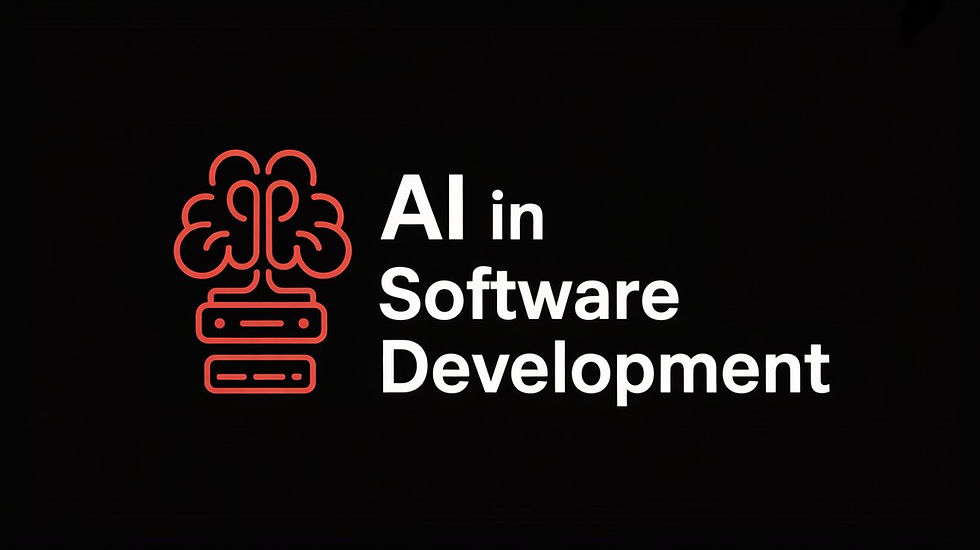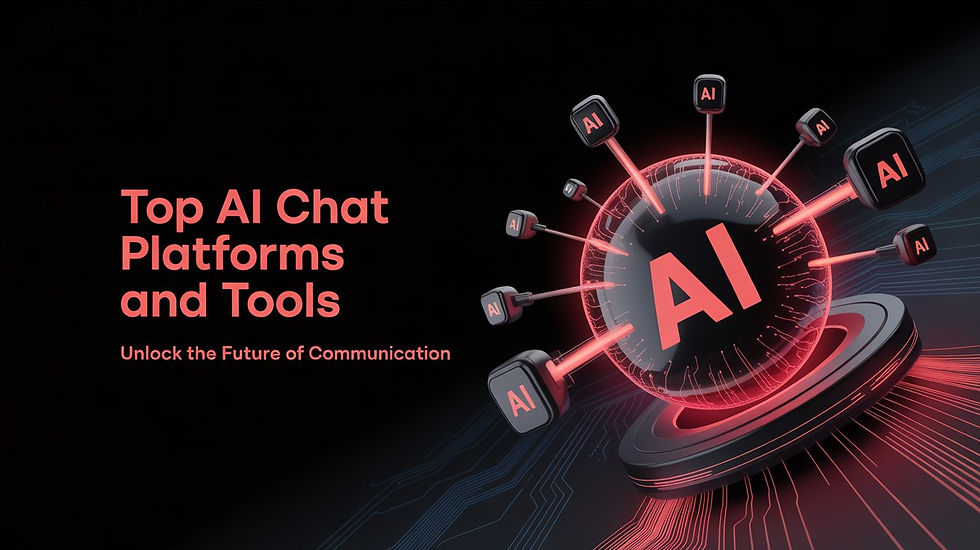AI Automation Trends to Watch in 2025: The Future Unveiled
- pengarhehe
- Feb 28
- 7 min read

AI Automation Trends
Imagine a world where AI doesn’t just assist—it anticipates your every move. Welcome to 2025, where AI automation is no longer a sci-fi dream but a cornerstone of business strategy. From crafting hyper-personalized customer experiences to powering sustainable operations, AI is transforming industries at lightning speed. In this comprehensive guide, we’ll dive into the top AI automation trends shaping 2025 and show you how to leverage them to stay competitive. Whether you’re a business owner, marketer, or tech enthusiast, this article is your roadmap to the future. For more cutting-edge AI insights, check out aiautomationspot.com.
AI automation is evolving fast, and 2025 is set to be a pivotal year. With global adoption skyrocketing, businesses that embrace these trends will lead the pack. The convergence of technological advancements, economic shifts, and societal expectations is fueling this revolution, making AI an indispensable tool across sectors. Let’s explore what’s driving this change and how it can work for you.

Why AI Automation Matters in 2025
AI automation isn’t just a buzzword—it’s a $15 trillion opportunity. According to PwC, it’s projected to boost the global GDP by that staggering amount by 2030, with 2025 marking a critical milestone. Why? Economic pressures, remote work, and sustainability goals are pushing companies to automate smarter. Stats show 83% of businesses now rank AI as a top priority, per a 2024 Deloitte survey. Retail, for instance, has seen a 25% jump in efficiency thanks to AI-driven automation.
The drivers are clear: labor shortages, rising costs, and consumer demand for seamless experiences. AI steps in to bridge these gaps, cutting operational expenses while boosting innovation. In 2025, ignoring AI isn’t an option—it’s a competitive disadvantage. Moreover, as companies face increasing scrutiny from regulators and consumers alike, AI offers a way to meet these challenges head-on by improving transparency and efficiency.
The Economic Impact of AI Automation
The economic impact of AI automation is profound. A 2024 study by McKinsey & Company estimated that AI automation could increase workplace productivity by up to 40% by 2025. Businesses are already seeing the benefits. For example, in the manufacturing sector, AI-driven predictive maintenance has reduced downtime by 30%, according to a report by Capgemini. This not only saves costs but also optimizes resource allocation, allowing companies to focus on innovation rather than firefighting operational issues.
AI Automation in Different Industries
AI automation is not limited to tech giants; it’s permeating every industry. In healthcare, AI is automating patient scheduling, diagnostics, and even surgical procedures. A 2024 report by Accenture highlighted that AI-powered automation in healthcare could save the industry $150 billion annually by 2026. In finance, AI is revolutionizing fraud detection and customer service, with JPMorgan Chase reporting a 30% reduction in fraud cases due to AI automation. The retail sector is also reaping benefits, with AI-driven inventory management reducing stockouts by 50%, according to a study by RetailWire. Meanwhile, in education, AI tools like adaptive learning platforms are personalizing education, improving student outcomes by 15%, as noted by EdTech Magazine.
The Role of AI in Workforce Transformation
Beyond efficiency, AI is reshaping the workforce. While some fear job displacement, experts from MIT Technology Review argue that AI will create new roles, such as AI ethics specialists and automation strategists, with demand for these positions expected to rise 20% by 2025. This shift underscores the need for upskilling, a trend businesses must address to stay ahead.

Top AI Automation Trends for 2025
Here’s where the rubber meets the road. These five trends will define AI automation in 2025, backed by real-world examples and actionable insights.
1. Hyper-Personalization
AI is taking personalization to new heights. By analyzing real-time data—think browsing habits, purchase history, even social media vibes—AI tailors experiences like never before. In 2025, businesses using hyper-personalization see conversion rates soar by up to 25%, according to Forrester. Picture an e-commerce site suggesting products before you even know you want them. That’s the power of AI.
Case Study: Netflix’s Hyper-Personalization
Netflix is a prime example of hyper-personalization done right. By leveraging AI algorithms to analyze viewing habits, the streaming giant recommends content tailored to individual preferences, resulting in a 60% increase in viewer engagement. This level of personalization keeps users hooked and reduces churn, a strategy that businesses across sectors can emulate. Learn more about Netflix’s approach in this Harvard Business Review article.
Need a tool to get started? Systeme.io lets you automate personalized email campaigns effortlessly. It’s affordable, intuitive, and perfect for scaling customer engagement. Alternatively, ActiveCampaign offers advanced personalization features starting at $15/month, ideal for businesses looking to deepen customer relationships.
2. AI-Powered Sustainability
Green is the new gold. In 2025, AI is helping companies slash carbon footprints and optimize resources. Tesla’s a prime example—its AI-driven manufacturing cuts energy use by 15%, setting a benchmark for others. McKinsey predicts early adopters will reduce emissions by 20% this year alone, as detailed in their sustainability report. From supply chain tweaks to smarter energy grids, AI is the sustainability hero businesses need.
Example: Google’s Data Centers
Google has been using AI to optimize energy consumption in its data centers. By employing DeepMind’s AI algorithms, the tech giant reduced cooling costs by 40%, showcasing how AI can drive sustainability while cutting operational expenses. This approach is now being adopted by other tech companies, proving that sustainability and profitability can go hand in hand. For more details, see Google’s sustainability blog.
Additional Example: Siemens’ Green Manufacturing
Siemens uses AI to optimize production processes, reducing waste by 25% in its factories, as reported by Forbes. This demonstrates how AI can align with corporate social responsibility goals, appealing to eco-conscious consumers.
3. Conversational AI Evolution
Chatbots? So 2020. In 2025, conversational AI handles complex tasks—booking appointments, processing payments, even assisting doctors with scheduling. Healthcare’s a standout: AI voice tools cut admin time by 30%, per a 2024 HIMSS report. This isn’t just about answering FAQs; it’s about running workflows seamlessly.
Case Study: Babylon Health
Babylon Health, a UK-based healthcare startup, uses conversational AI to triage patients, reducing the need for in-person visits by 40%. This not only improves patient outcomes but also frees up medical staff to focus on critical cases. The success of Babylon Health underscores the potential of conversational AI in transforming service delivery. Explore more in TechRadar’s coverage.
Tool Spotlight: Google Dialogflow
For businesses looking to implement conversational AI, Google Dialogflow offers a robust platform to create natural, multilingual voice and text interactions, making it ideal for global scalability.
4. Low-Code AI Automation
You don’t need a PhD to use AI anymore. Low-code platforms are booming, with Gartner forecasting 65% of businesses adopting them by 2025. These tools let non-techies build automation workflows fast. Think drag-and-drop interfaces that turn ideas into action—perfect for agile teams looking to innovate without heavy IT overhead.
Example: Airtable’s Automation Features
Airtable, a popular project management tool, offers low-code automation features that allow users to create custom workflows without coding knowledge. This democratizes AI automation, enabling small businesses and startups to implement sophisticated processes without hiring a team of developers. Check out Airtable’s guide for practical applications.
Additional Tool: Bubble
Bubble is another low-code platform that empowers users to build AI-integrated apps, offering startups a way to prototype and launch products quickly without extensive coding expertise.
5. Ethical AI Frameworks
AI’s power comes with responsibility. In 2025, ethical frameworks tackle bias, transparency, and trust. Companies are under pressure to prove their AI is fair—think unbiased hiring algorithms or clear data usage policies. The World Economic Forum warns that without ethics, AI risks losing public trust and facing regulatory heat.
Case Study: IBM’s AI Ethics Board
IBM has established an AI Ethics Board to oversee the development and deployment of its AI technologies. This board ensures that AI systems are transparent, fair, and accountable, setting a standard for other companies to follow. By prioritizing ethics, IBM not only mitigates risks but also builds trust with its customers and stakeholders. Read more in IBM’s ethics policy.
Regulatory Landscape
Governments are stepping up too. The EU’s AI Act, set to fully roll out by 2025, mandates ethical AI practices, pushing companies worldwide to comply or face penalties. This global shift makes ethical AI a strategic priority.

How to Leverage These Trends
Ready to jump in? Here’s your step-by-step guide to making AI automation work for you in 2025.
Assess Your Needs
Pinpoint where AI can shine—marketing, operations, customer service? Start small, think big. Conduct an internal audit to identify inefficiencies and prioritize high-impact areas.
Pick the Right Tools
For marketing, Systeme.io streamlines campaigns. For sustainability, IBM Watson offers robust analytics. Match tools to goals. Explore free trials to test compatibility.
Measure and Optimize
Track ROI—cost savings, efficiency gains, customer happiness. Tweak as you go. Use tools like Google Analytics to monitor performance metrics in real time.
Here’s a quick rundown in a table:
Implementing AI Automation: A Practical Guide
To successfully implement AI automation, businesses must first conduct a thorough assessment of their current processes. Identify bottlenecks and areas where automation can have the most significant impact. For instance, if customer service is a pain point, consider deploying conversational AI to handle routine inquiries. Once the focus area is identified, select tools that align with your budget and technical capabilities. Many AI tools offer free trials, allowing businesses to test their effectiveness before committing. Finally, establish key performance indicators (KPIs) such as time saved, cost reduction, or customer satisfaction improvements to measure the success of your automation efforts. Regularly review these metrics and optimize your strategies accordingly. For a deeper dive, see Harvard Business Review’s guide to AI implementation.
Training Your Team
Adoption hinges on people. Invest in training to ensure your team can use AI tools effectively. Platforms like Coursera offer affordable AI courses to bridge the knowledge gap.

FAQs
What are the biggest AI automation trends in 2025?
Hyper-personalization, sustainability, conversational AI, low-code platforms, and ethical AI lead the pack.
How can businesses prepare for AI trends?
Invest in tools like Systeme.io, train staff, and prioritize ethical practices. Stay informed via resources like MIT Sloan Management Review.
Will AI automation replace jobs in 2025?
Not quite—it’ll shift roles, creating demand for AI oversight and strategy pros. Upskilling is key.
What industries will benefit most from AI automation in 2025?
Healthcare, retail, finance, and manufacturing are set to see the most significant gains, but virtually every sector can leverage AI to improve efficiency and innovation.
How can small businesses afford AI automation?
Many tools offer scalable pricing—start with free tiers or low-cost options like Zapier and grow as needed.
Conclusion
AI automation in 2025 isn’t a trend—it’s a transformation. Hyper-personalization, sustainability, conversational AI, low-code platforms, and ethical frameworks are rewriting the rules of business. The time to act is now. Your competitors aren’t waiting, so why should you? Dive into these trends, equip your team with the right tools, and watch your operations soar. For ongoing updates, bookmark aiautomationspot.com and stay ahead of the curve.





Comments